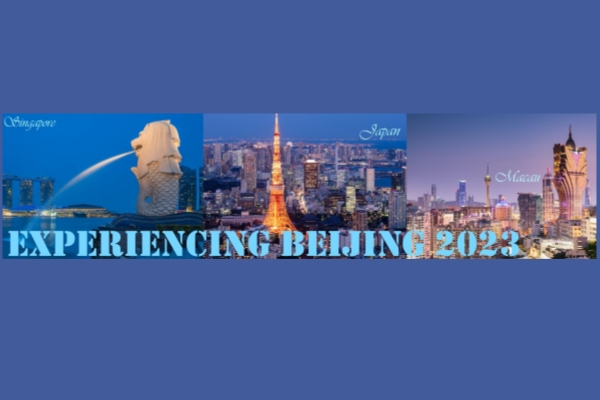Beijing Cultural 'White Paper' released
The State-owned Cultural Assets Administration Center (SOCAAC) and the School of Cultural Industry Management of Communication University of China released a joint "White Paper on Beijing Cultural Industries Development (2022)" on July 26 at the Culture and Technology Integration Development Sub-Forum of the Beijing Cultural Forum.
The white paper takes stock of the overall situation, important progress and characteristic highlights of the development of Beijing's cultural industry. It provides an important window for all sectors of society to understand the city's cultural industry in a comprehensive and authoritative manner.
The "White Paper" shows that in 2021, there are 5,539 cultural industry legal entities above designated size in the city, an increase of 368 over the previous year. The total revenue is 1,756.38 billion yuan ($274 million), a year-on-year increase of 17.5 percent, and an average two-year growth of 8.9 percent, exceeding the pre-epidemic level (8.2 percent in 2019). The total profit was 142.94 billion yuan, a year-on-year increase of 47.5 percent. The per capita operating income of cultural enterprises above designated size was 2.99 million yuan, an increase of 328,000 yuan over the previous year.
The data fully shows that Beijing cultural enterprises actively responded to the adverse effects of the impact of the epidemic, accelerated their digital transformation, and made up for the limited space of offline business through online business expansion, and achieved positive results. In 2020, the city's cultural industry achieved an added value of 377.02 billion yuan, accounting for 10.5 percent of the regional GDP. This is the first time that the added value of Beijing's cultural industry accounts for more than 10 percent of the economy.
From January to December, among the cultural industries above designated size in the city, the total revenue of cultural core fields was 1,584.83 billion yuan, a year-on-year increase of 17.8 percent, accounting for 90.2 percent of the total revenue of cultural industries above designated size. The digitalization of the cultural industry has accelerated. There are 1,708 core digital cultural enterprises above designated size in the city, with an operating income of 1,140.98 billion yuan, a year-on-year increase of 23.5 percent, driving the city's cultural enterprise operating income to increase by 14.9 percentage points, of which the internet + cultural field operating income accounts for 87.8 percent. The development of new business formats and new models is strong. The 16 industries with obvious characteristics of new business formats achieved operating income of 1,024.65 billion yuan, a year-on-year increase of 22.6 percent, and contributed 73.2 percent to the growth of cultural enterprises in the city.
They took the urban renewal action as an opportunity to promote the gathering of cultural resource elements and build a new space for urban culture. Shougang Cultural Park, 798 Art Zone, 751 Fashion Design Plaza, Lang Garden, Xingguang Film and Television Park and other distinctive cultural industry parks are becoming venues of advanced socialist culture, the birthplace of urban renewal, and the innovation center of cultural and technological integration. It is a gathering place for high-quality cultural enterprises and for citizens' cultural consumption.
The city's top 100 cultural enterprises in terms of revenue achieved an operating income of 1,178.46 billion yuan, accounting for nearly 70 percent of the city's total, an increase of 3.7 percentage points over the previous year. There are 42 cultural unicorn enterprises, whose operating income accounts for 28.2 percent of the city's total.
In line with the trend of consumption upgrading, Beijing has launched a batch of well-received and popular projects such as "The Age of Awakening". "Looking at Beijing in a big drama" has become a new business card of the capital's culture, and the number of brick-and-mortar bookstores ranks first in the country. In addition, Beijing continues to hold brand activities such as the Beijing cultural consumption season both online and offline, which effectively boosted market confidence. In 2021, the per capita cultural and entertainment consumption expenditure of the city's residents will be 1,367 yuan, a year-on-year increase of 12.2 percent.
In 2021, the city's total import and export of cultural products will reach US$6.13 billion, an increase of 65.7 percent over the previous year, of which the export value of cultural products is $1.94 billion, a year-on-year increase of 151.9 percent. The city's import and export of personal, cultural and entertainment services was $2.5 billion, a year-on-year increase of 5.4 percent, of which exports were $860 million, a year-on-year increase of 26.2 percent.

 Responsibilities of the SOCAAC
Responsibilities of the SOCAAC Experiencing Beijing 2023
Experiencing Beijing 2023